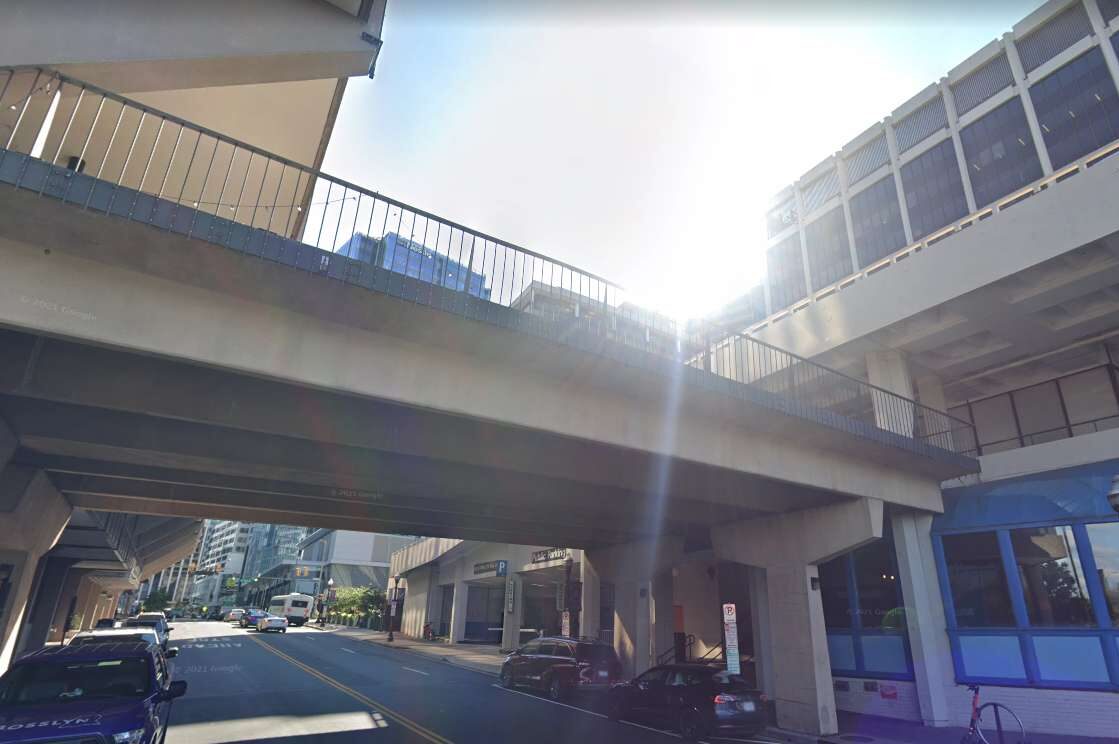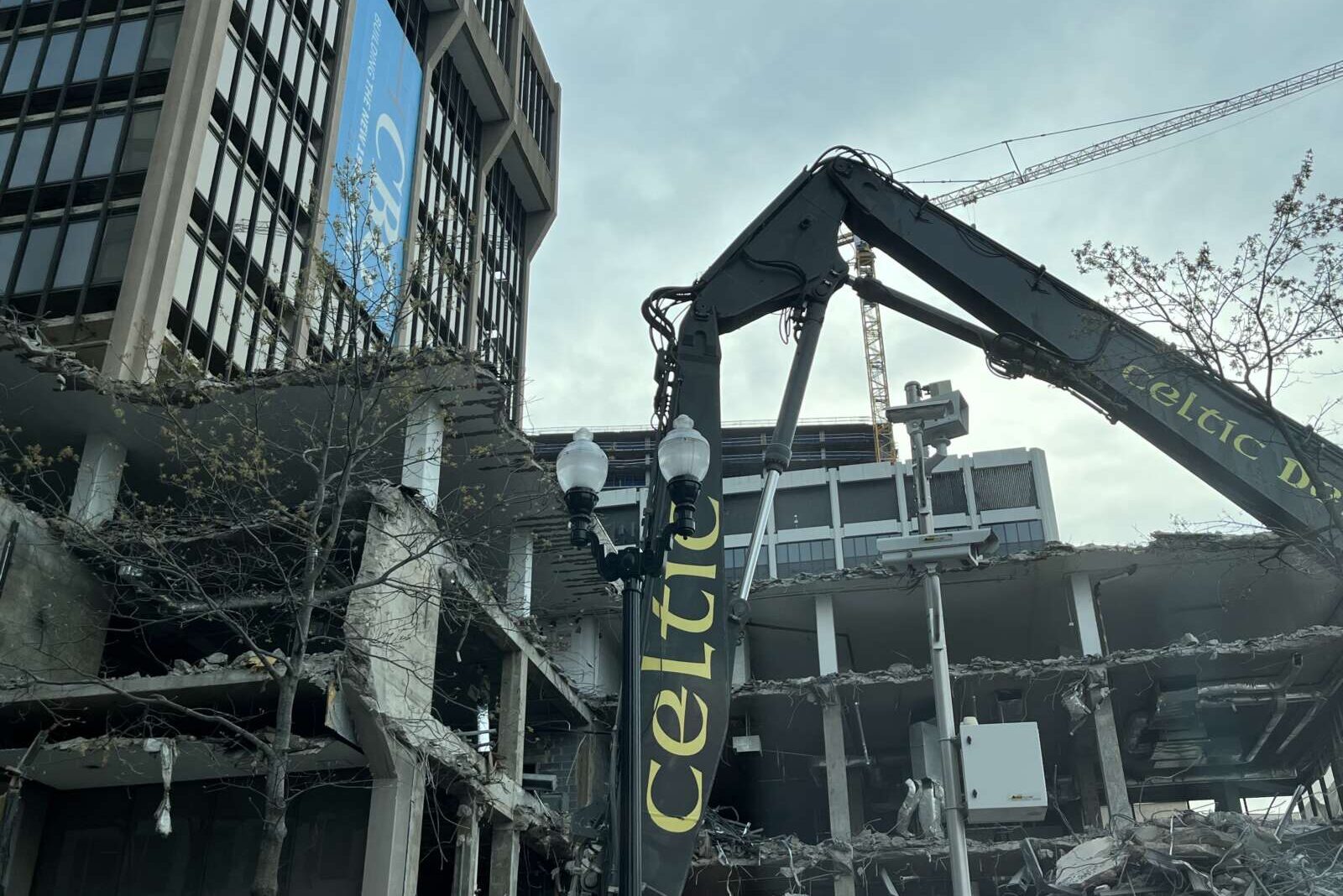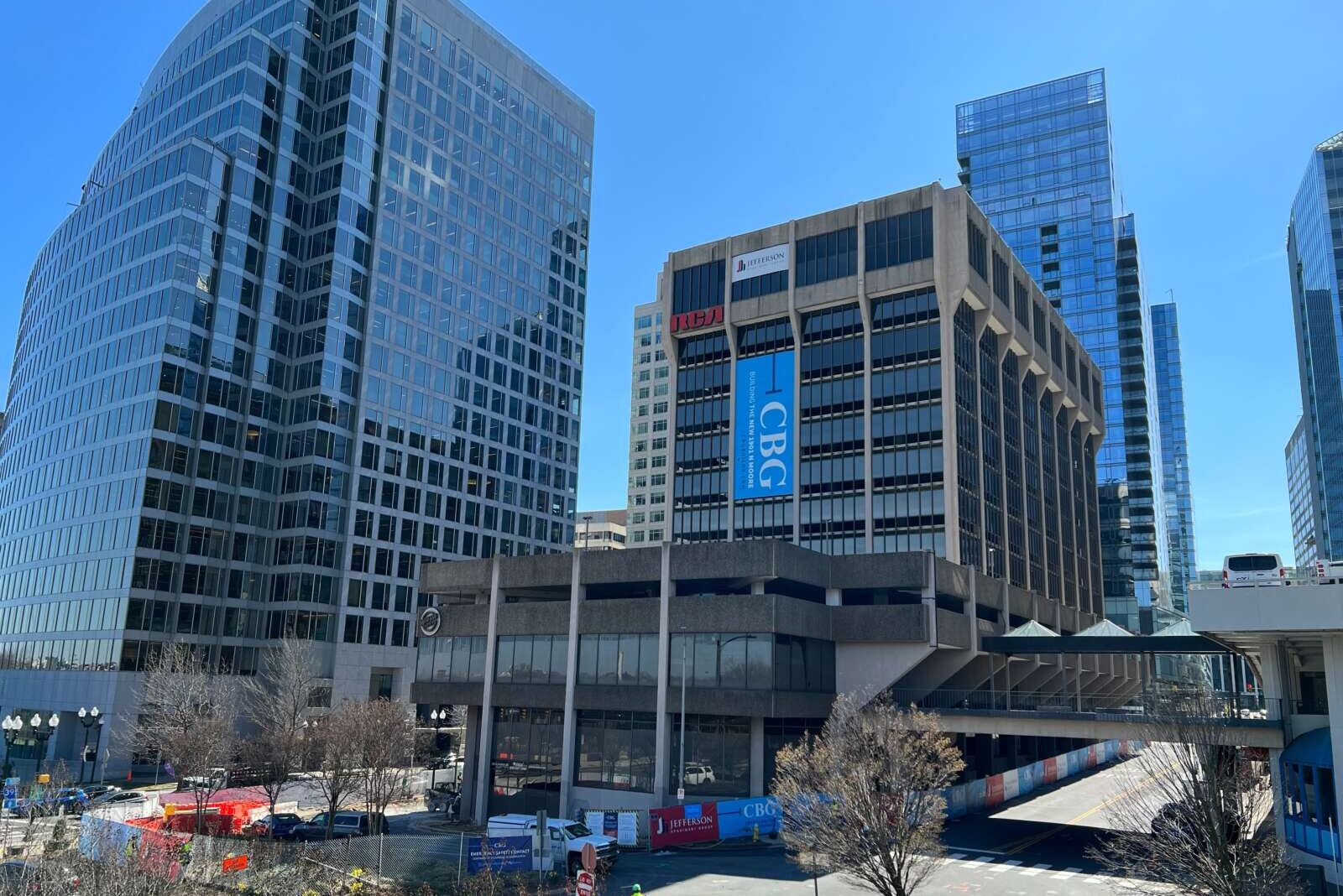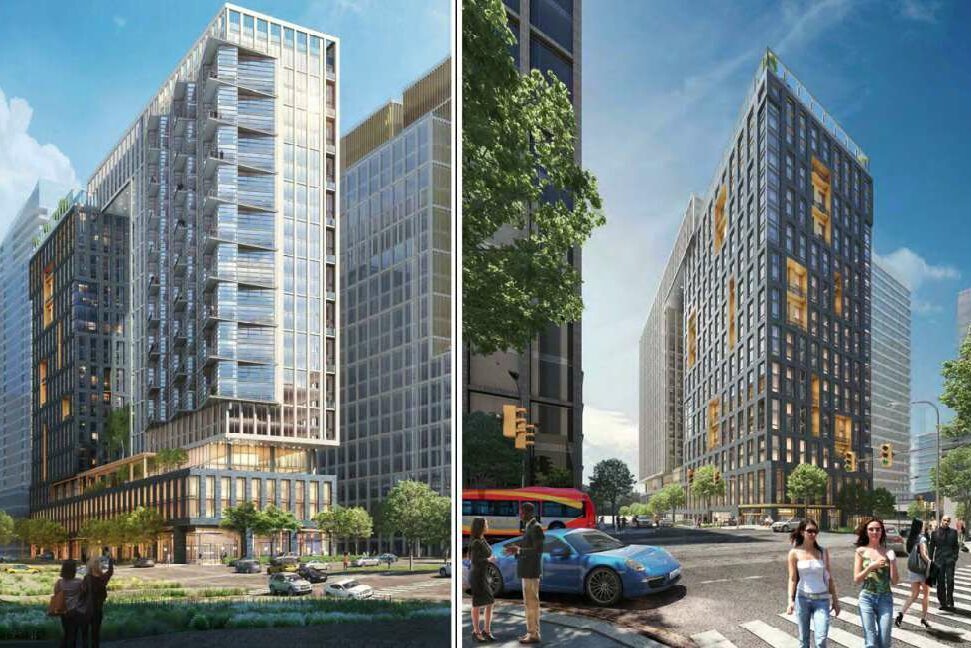The pedestrian bridge connecting the Rosslyn’s RCA building to another building (and bar) across N. Moore Street is set to be demolished soon.
The demolition process will start on Saturday and last two weekends: April 29-30 and May 6-7, per a letter to residents of the Central Place apartments, shared with ARLnow.
Jefferson Apartment Group, one of the developers leading a joint venture to redevelop the RCA property at 1901 N. Moore Street as an apartment tower, confirmed that the information shared was correct. The letter provided some details about expected traffic impacts as a result of the demolition.
“Please note that North Moore Street will be completely closed off to pedestrian and bus traffic during this period, except for cars that need to access the garage entrance for 1911 Fort Myer Drive,” the letter said.
The bridge connects the old office building to the retro pool hall Continental. Demolition could impact the buses and shuttles that pick up people in front of the bar’s beer garden and take them to D.C., such as the shuttle between Georgetown University and the Rosslyn Metro station.
“All parties of bus routes that stop at the corner of North Moore Street and 19th Street N. have been notified of the work, and they will notify all customers of any route changes,” the note to residents said.
Demolition began earlier this month, Axios reported. Rather than an implosion, Jefferson Apartment Group previously told ARLnow that the building will be dismantled bit by bit.
The county approved plans to replace the concrete-cladded office building with a 27-story, 423-unit apartment building in June 2021. Construction is expected to take three years.
Like the RCA building itself, pedestrian bridges in Rosslyn are relics of a mid-century planning belief that bridges make pedestrians more comfortable by separating them from vehicular traffic, noted a 2014 Washington Business Journal article.
Forty years later, these were already out of vogue, per a scathing passage in a 1999 study of Rosslyn.
“To the planners of the early 50’s and 60’s, presumably it seemed orderly and logical to separate the pedestrian flow with its erratic, unpredictable movements, from the fast-moving steel machines of the road,” wrote the local architecture firm the Lukmire Partnership in the study.
Publications from that time illustrated these passageways as wide, open, landscaped spaces that were somehow “strikingly devoid” of any signs of a vibrant urban streetscape, the report continued.
“Buried in the back of the planners’ minds perhaps lingered images of the piazza at San Marco in Venice or those of Rome,” Lukmire Partnership concluded. “If so, in the instance of Rosslyn, something was lost in translation.”





